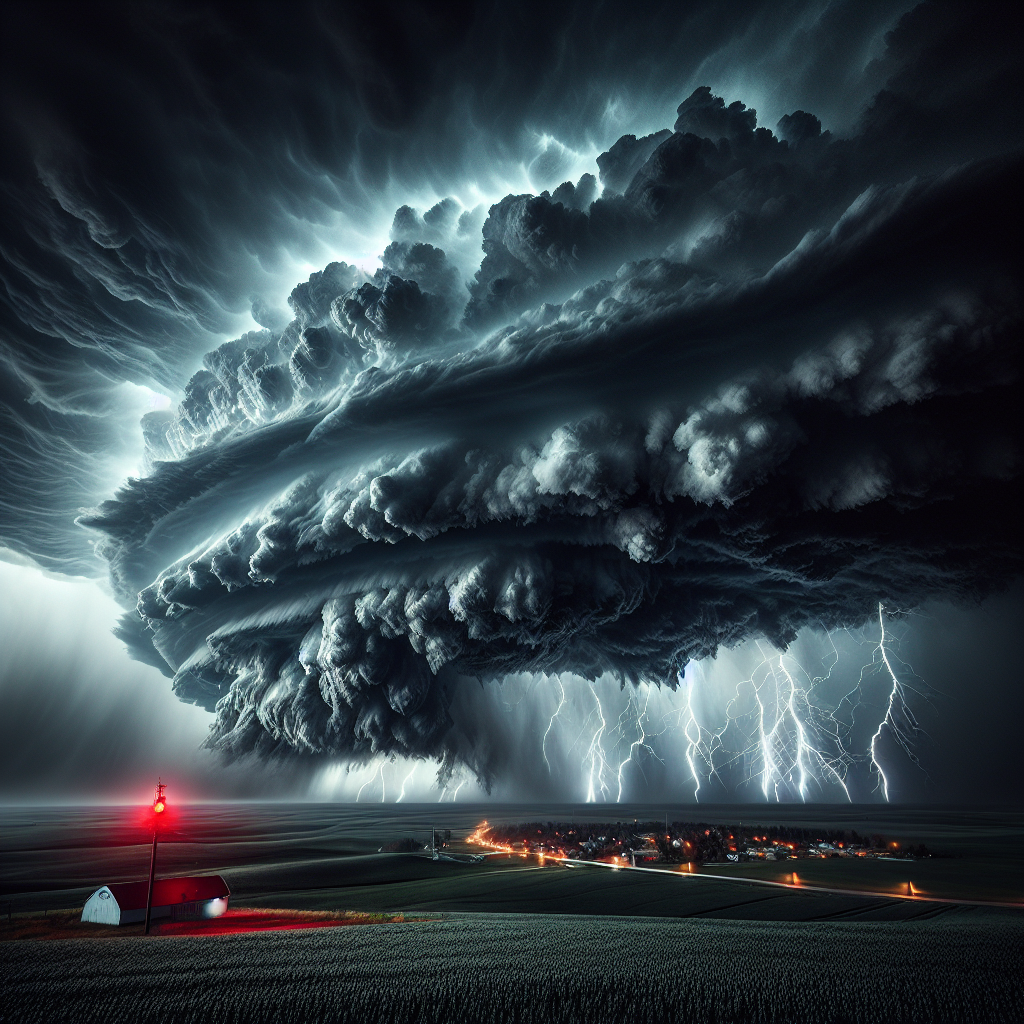Understanding Severe Thunderstorm Warnings: What You Need to Know
Severe weather can be both fascinating and frightening. With the rise in unpredictable weather patterns, understanding severe thunderstorm warnings becomes essential. These warnings are issued to alert the public about potential severe weather conditions, which can cause significant damage and pose serious threats to safety. In this article, we will delve into the intricacies of severe thunderstorm warnings, explore related terms like severe thunderstorm watches, and examine how these affect areas such as Fort Worth and Dallas.
What is a Severe Thunderstorm Warning?
A severe thunderstorm warning is an alert issued by meteorological agencies when a severe thunderstorm is occurring or imminent in the area. The criteria for a storm to be classified as “severe” typically include:
- Hail that is one inch in diameter or larger.
- Winds gusting at or above 58 miles per hour.
- Potential for tornadoes.
These warnings are critical because they provide the public with information needed to take immediate action to protect themselves and their property. When such a warning is issued, it’s crucial to seek shelter and stay informed through reliable sources.
How Severe Thunderstorm Warnings are Issued
Meteorologists use a variety of tools to monitor weather conditions, including radar, satellite imagery, and weather stations. When conditions indicate the development of a severe thunderstorm, a warning is issued. These warnings are disseminated through multiple channels, including:
- National Weather Service (NWS) bulletins
- Local news broadcasts
- Weather apps and websites
For more information on how these warnings are issued, you can visit the National Weather Service website.
Severe Thunderstorm Watch vs. Warning
It’s important to distinguish between a severe thunderstorm watch and a severe thunderstorm warning. While they may sound similar, they serve different purposes:
| Severe Thunderstorm Watch | Severe Thunderstorm Warning |
|---|---|
| Indicates that conditions are favorable for severe thunderstorms to develop. | Indicates that a severe thunderstorm is occurring or imminent. |
| Typically covers a larger geographical area. | Usually covers a smaller, more specific area. |
| Issued several hours before potential severe weather. | Issued when the severe weather is already happening or about to happen. |
Understanding these differences can help you respond appropriately to weather alerts.
Impact of Severe Thunderstorms on Fort Worth and Dallas
The Fort Worth weather and Dallas weather are particularly susceptible to severe thunderstorms due to their location in the Tornado Alley. These cities often experience extreme weather conditions during certain times of the year.
Weather Patterns in Dallas and Fort Worth
Both Dallas and Fort Worth experience a range of weather conditions throughout the year. Spring and early summer are typically the most active periods for thunderstorms in this region. During these times, the risk of severe weather increases, leading to more frequent watches and warnings.
- Spring: Marked by volatile weather patterns, including severe thunderstorms and tornadoes.
- Summer: Hot and humid conditions can trigger afternoon thunderstorms.
- Fall: Weather becomes more stable, but thunderstorms can still occur.
For more detailed weather forecasts and updates in the Dallas and Fort Worth areas, you can visit local news websites such as WFAA Weather.
Preparing for Severe Thunderstorms
Preparation is key when it comes to severe weather. Here are some tips to help you stay safe during a severe thunderstorm warning:
- ✅ Stay Informed: Keep track of the latest weather updates through reliable news sources or weather apps.
- ✅ Secure Outdoor Items: Bring in or secure outdoor furniture and other items that could become projectiles in strong winds.
- ✅ Find Shelter: Go to a sturdy building and avoid windows. The lowest floor or an interior room is safest.
- ✅ Have an Emergency Kit: Include essentials like water, food, flashlight, and a first-aid kit.
- ✅ Have a Plan: Discuss and practice your severe weather plan with family members.
Frequently Asked Questions (FAQ)
What should I do if I’m caught outside during a severe thunderstorm?
If you are caught outside during a severe thunderstorm, try to find shelter immediately. Avoid open fields, tall trees, and metal objects. If no shelter is available, crouch down low to the ground, making yourself as small a target as possible.
How can I receive severe thunderstorm warnings?
You can receive severe thunderstorm warnings through various channels, including weather apps, local news stations, and NOAA Weather Radios. It is advisable to have multiple sources for receiving alerts to ensure you don’t miss any critical information.
Can severe thunderstorms cause tornadoes?
Yes, severe thunderstorms can produce tornadoes. That’s why it’s crucial to take all severe weather warnings seriously and be prepared to take immediate action if a tornado warning is issued.
Are severe thunderstorm warnings common in Fort Worth and Dallas?
Yes, severe thunderstorm warnings are relatively common in Fort Worth and Dallas, especially during the spring and early summer months. The region’s location in Tornado Alley makes it more prone to severe weather events.
Conclusion
Severe thunderstorms can have devastating effects, but by understanding the warnings and taking appropriate precautions, you can protect yourself and your loved ones. Stay informed, stay prepared, and stay safe during severe weather events. For more information on severe thunderstorm safety, visit the Ready.gov website.


